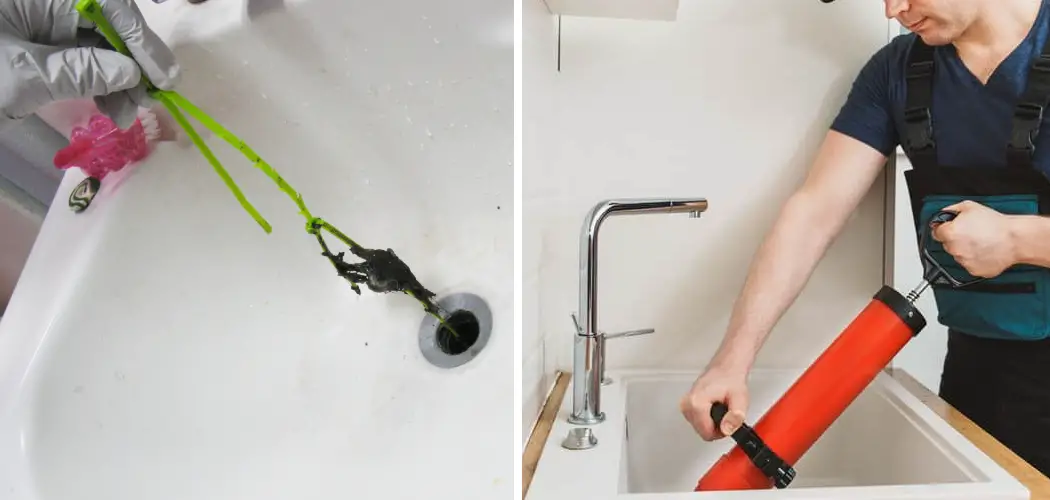Knowing to snake a drain without a snake can come in handy when you find yourself in a bind with a clogged drain. This simple and easy procedure can be done quickly, saving you time and money from hiring a professional plumber. It is also great for addressing minor clogs that may not require more invasive measures, such as snaking the pipe with a snake.
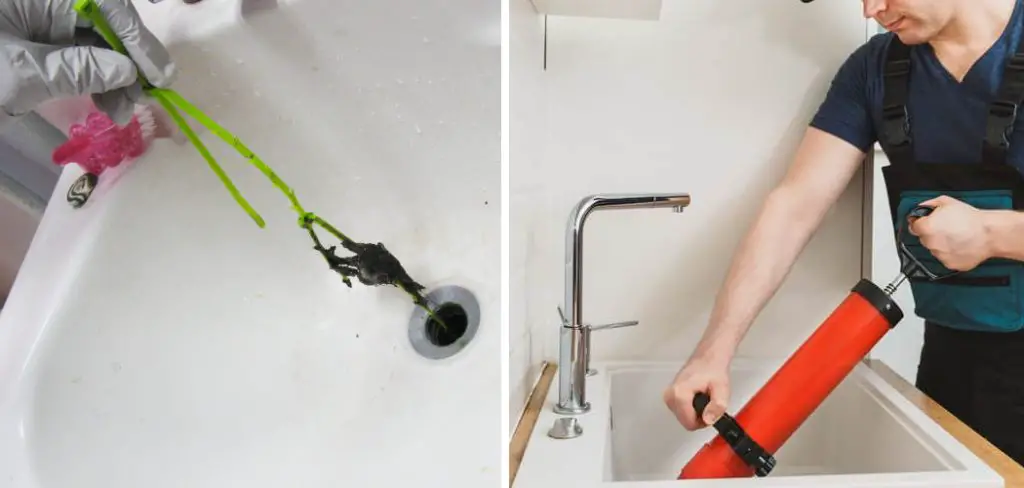
One of the greatest advantages of learning to snake a drain without a snake is that it eliminates the need to purchase an expensive tool. Snakes can be quite costly, so not buying one for this task is beneficial.
Additionally, using alternative methods allows you to be more creative and save on labor costs by doing the work yourself versus hiring a plumber. You can find step-by-step instructions on how to snake a drain without a snake in this blog article.
Step by Step Processes for How to Snake a Drain Without a Snake
Step 1: Inspect the Sink
Before attempting to snake the drain, it’s important to ensure no debris is blocking the sink. Look for anything obstructing the sink, such as food particles, hair, or grease. If you can see something blocking the sink, try to remove it with your fingers or a pair of pliers.
Step 2: Create Pressure
Put a stopper in the sink and fill it with hot water. This will cause pressure to build up and may be enough to push whatever is blocking the drain back out of the pipe. If this doesn’t work, move on to the next step. Mix equal parts baking soda and vinegar in a bowl.
Next, pour this mixture into the sink and let it sit for 15 minutes. The chemical reaction should help to break down whatever is blocking the drain.
Step 3: Boiling Water
If the baking soda and vinegar don’t work, try pouring boiling water down the drain to melt any grease or soap residue clogging the pipe. Place a plunger over the drain and ensure it covers the opening completely. Pump up and down vigorously several times to create suction and hopefully push whatever is blocking the drain out of the pipe.
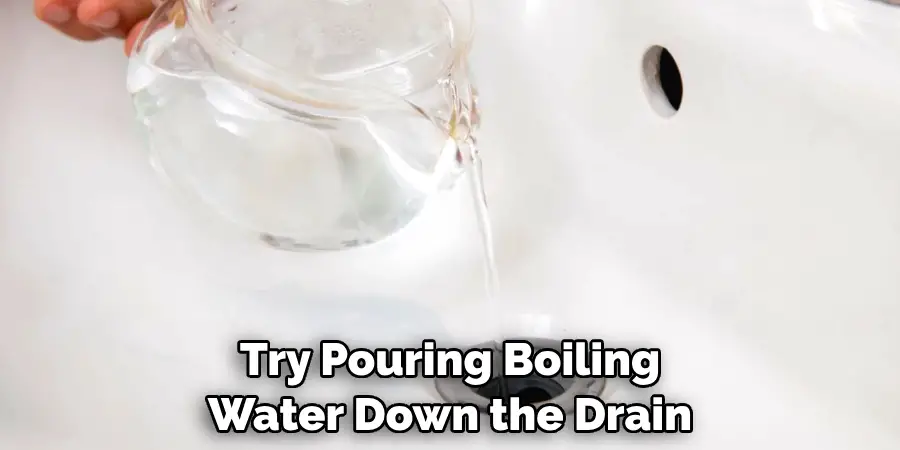
Step 4: Wire Hanger Method
Straighten out a wire hanger to form a long, thin piece of metal. Wrap the end around a pencil or cylindrical object to form a small hook. Push this into the drain and attempt to pull any debris out. Pour some dish soap down the drain and let it sit for 10 minutes. The soap helps break down residue and makes it easier to pull out of the drain.
Step 5: Salt Water Solution
Mix two tablespoons of table salt with 1 cup of boiling water. Pour this solution down the drain and let it sit for 10 minutes before flushing with hot water. This will help dissolve any greasy clogs made up of soap residue. Attach the hose to your wet/dry vacuum and place it over the sink drain. Turn on the vacuum and let it sit for several minutes to create suction that may pull debris out of the pipe.
Step 6: Call a Professional Plumber
If none of these methods work, it may be time to call in a professional. A plumber will be able to diagnose the issue and determine if something more serious is going on, such as a broken pipe or tree root problem. They will have the tools and expertise to properly snake the drain without causing any damage.
Following these steps should help you snake your drain without a snake. If these methods don’t work, it may be time to call a professional for assistance.
Tips for How to Snake a Drain Without a Snake
- Wear gloves for protection. Since you will be dealing with a dirty and bacteria-filled drain, protecting your hands from any potential harm is important. Gloves made of rubber or latex are ideal for this job.
- Ensure the area around the sink is clean of debris or other objects that could fall into the drain while clearing it.
- Use a pair of long-tipped needle-nose pliers to reach deep into the drain and pull out any clumps of hair or other debris blocking the pipe. This is an effective way to snake a drain without buying an expensive snake tool.
- If you come across any large objects that are stuck in the pipe, do not continue to try to remove them, as you may cause further damage. Instead, contact a certified plumber for assistance.
- If using boiling water to help dislodge gunk and blockages, be careful! The heat can cause serious burns if you accidentally splash yourself with hot water while snaking your drain.
- If you are using any chemical solutions to help clear the drain, ensure it is compatible with your pipes and always follow all safety instructions outlined on the product label.
- After snaking your drain, run hot water for a few minutes to ensure everything works properly, and no blockages remain. This will also help ensure that any chemicals used to clear the drain are fully flushed out.
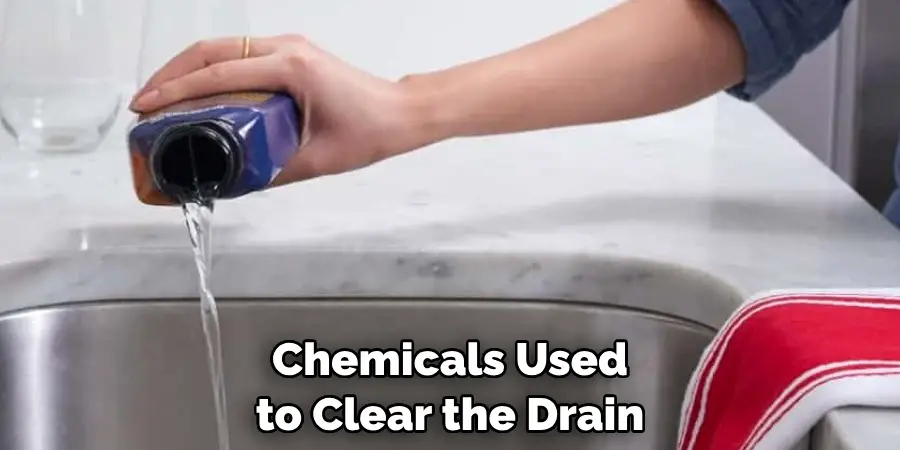
Following these tips will help to ensure a safe and effective job when snaking a drain without a snake.
How Often Should You Clean or Snake My Drains?
It is important to keep your drains clean and unclogged for optimal performance. Most people recommend that you snake or clean your drains at least once a year to prevent clogs from forming. Any slow draining or water backing up in your sinks could indicate a clog, and it’s time to take corrective action.
Fortunately, if you don’t own a snake tool, there are still numerous ways to clear your drains without needing one. One of the most effective and environmentally friendly ways is to use baking soda and vinegar. Simply pour a cup of baking soda down the drain first, followed by a cup of vinegar.
Allow the mixture to sit in the pipe for an hour or more, and then flush it with hot water. The reaction between the two will help break down any clogs in your pipes.
Are There Any Benefits to Snaking a Drain Without a Snake?
Absolutely. Not only does snaking a drain without using a snake save you money, but it also helps to reduce the amount of waste in landfills. It can also help prevent sewer and water line backups from clogs, which are expensive and time-consuming.
Additionally, when done properly, no harsh chemicals are needed, so it is less damaging to your pipes and the environment. So, if you are looking for an easy, cost-effective way to unclog your drain, snaking it without a snake might be the right choice.
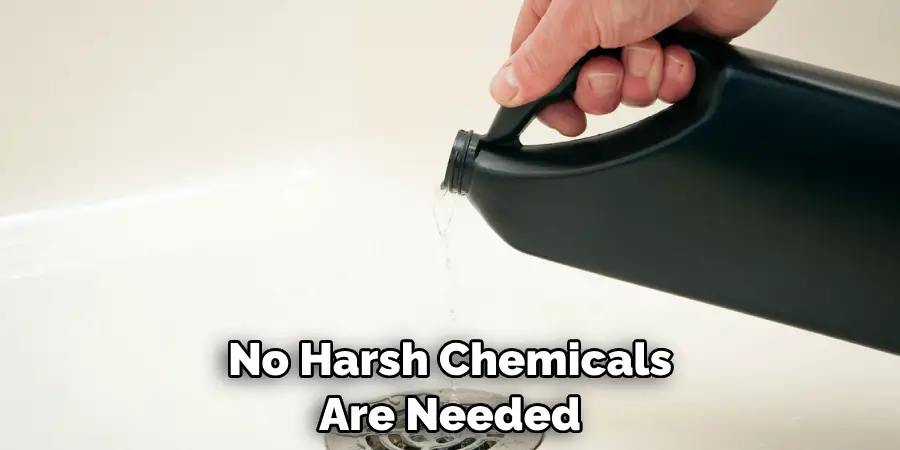
Finally, there are some situations in which a traditional snake might not be able to reach or fit into tight spaces, such as behind bathroom sinks or toilets. Snaking a drain without a snake may be the only option in these cases.
Snaking a drain without a snake is an easy and effective way to eliminate stubborn clogs. With just a few simple tools and some elbow grease, you can unclog your drain and keep it flowing freely for years.
Is It Possible to Snake a Clogged Drain Without Damaging the Pipes?
A clogged drain is one of the most common and annoying problems that homeowners have to deal with. If you’re faced with this issue, your first thought may be to snake the drain – but if you don’t own a plumbing snake, then it can seem impossible.
But don’t worry – learning to snake a drain without a snake is possible. To start, it’s important to understand why the pipes are clogged in the first place. It could be because of dirt and debris buildup or an object stuck in the pipe.
If you think something is stuck, try using a pair of pliers to get it out before attempting any DIY plumbing solution. If the clog is caused by buildup, then you can use a few methods to unclog the drain. One option is to use a plunger. Be sure to cover any other nearby open drains with a wet cloth and fill the sink or tub with enough water to cover the top of the plunger cup before using it.
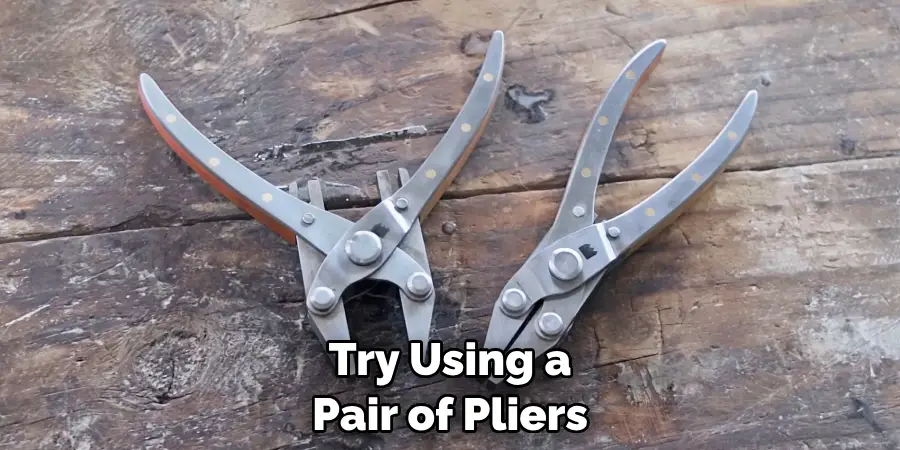
Conclusion
In conclusion, it is possible to snake a drain without using a snake effectively. Several methods can be used, such as boiling water, a plunger, or an auger wrapped in cloth.
Although these methods may be effective in certain situations, they may only be suitable for some types of blockages. Professional help should always be sought if the issue persists after attempting the abovementioned techniques.
Furthermore, preventive measures such as regular inspections and cleaning can help reduce the chances of future blockages in your drains. This article has been beneficial for learning how to snake a drain without a snake. Make Sure the preventive measures are followed chronologically.

